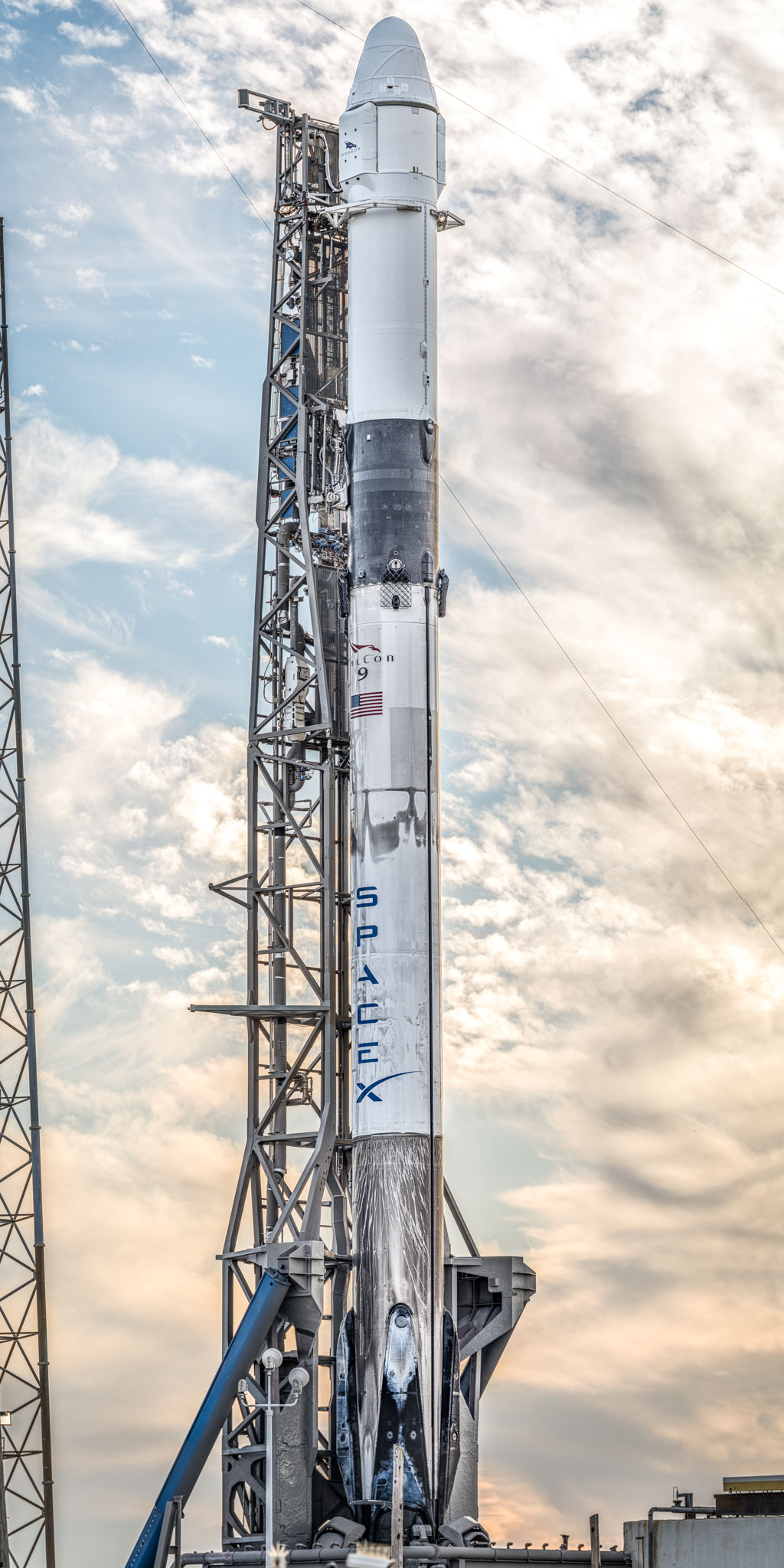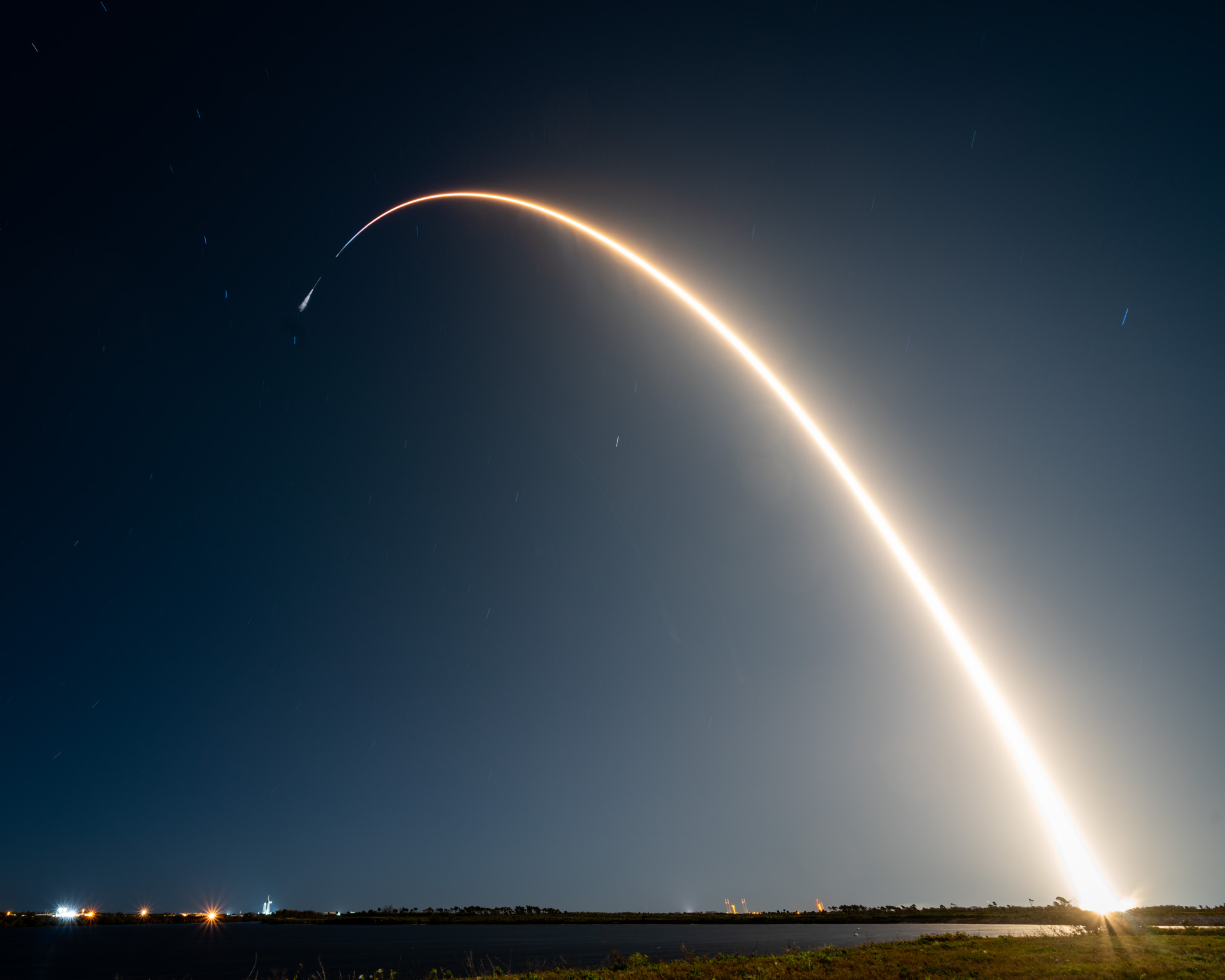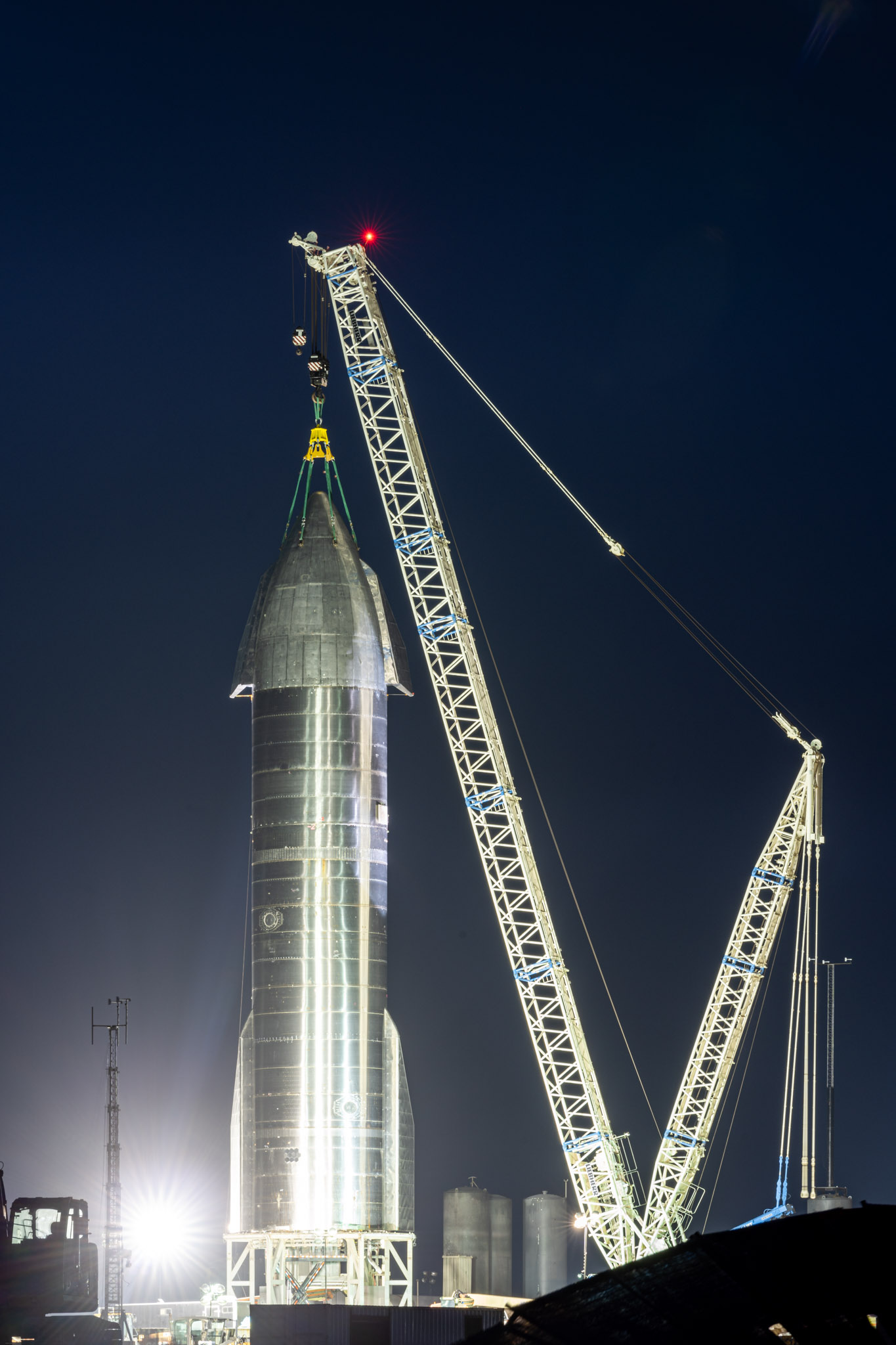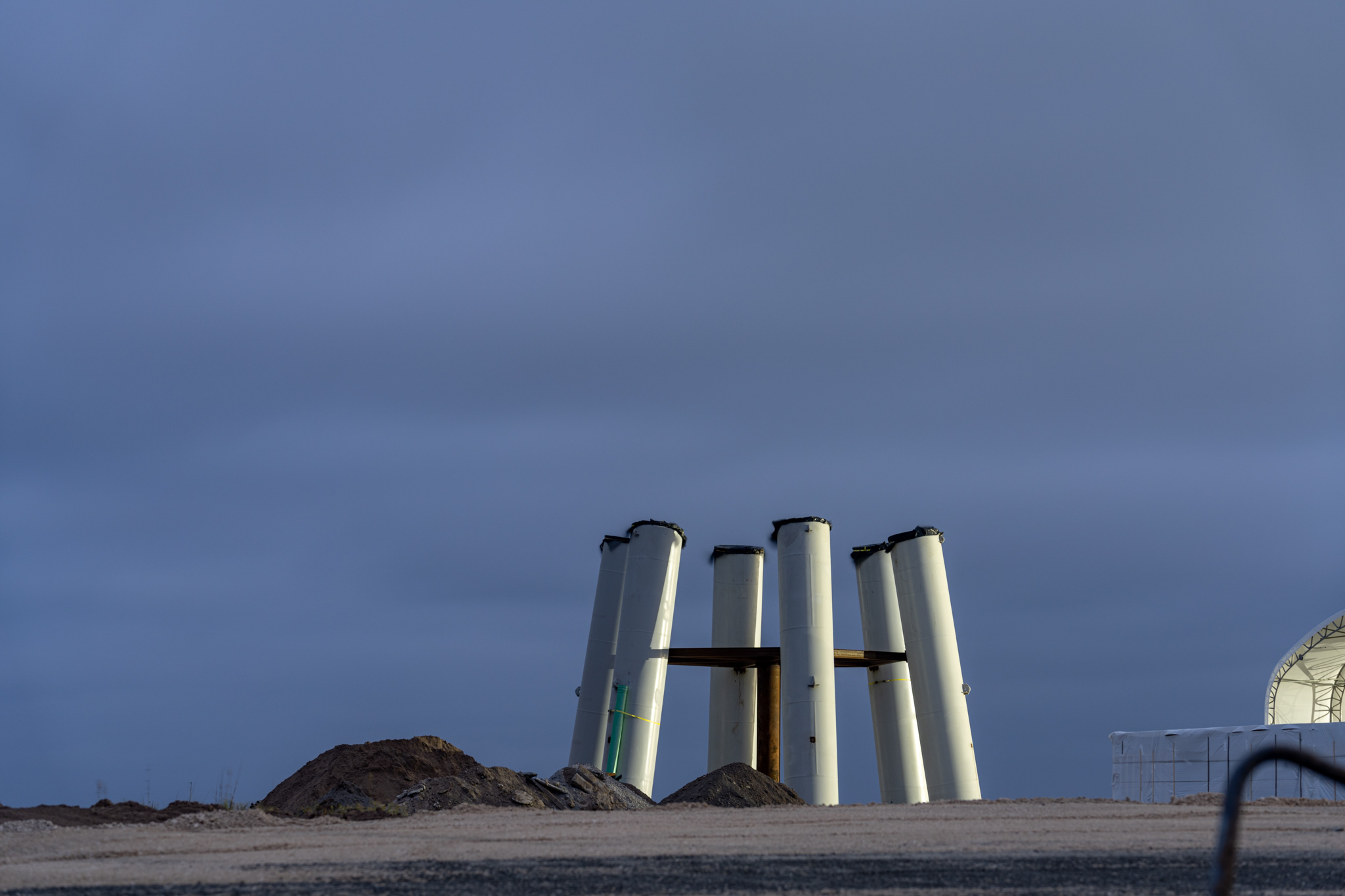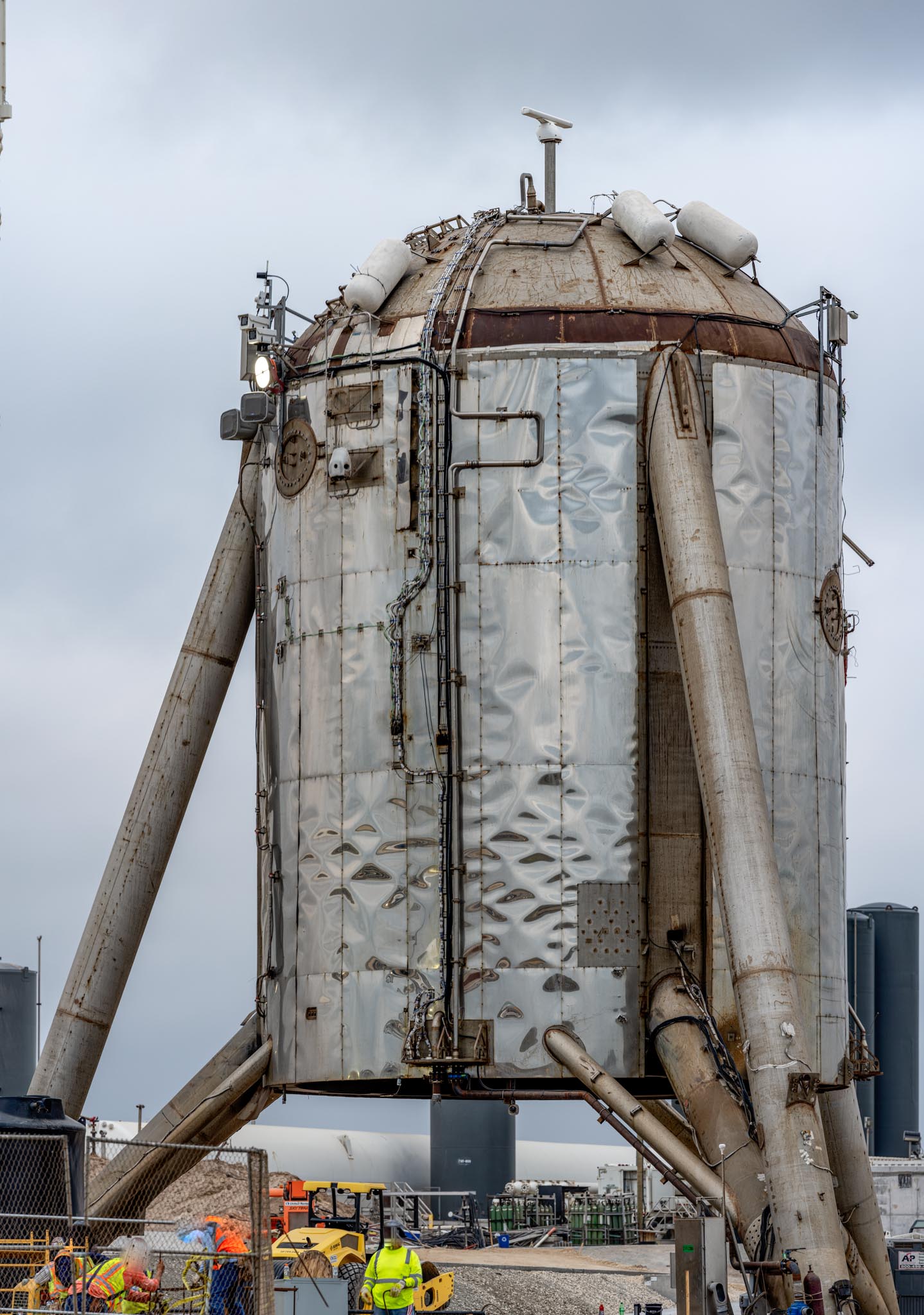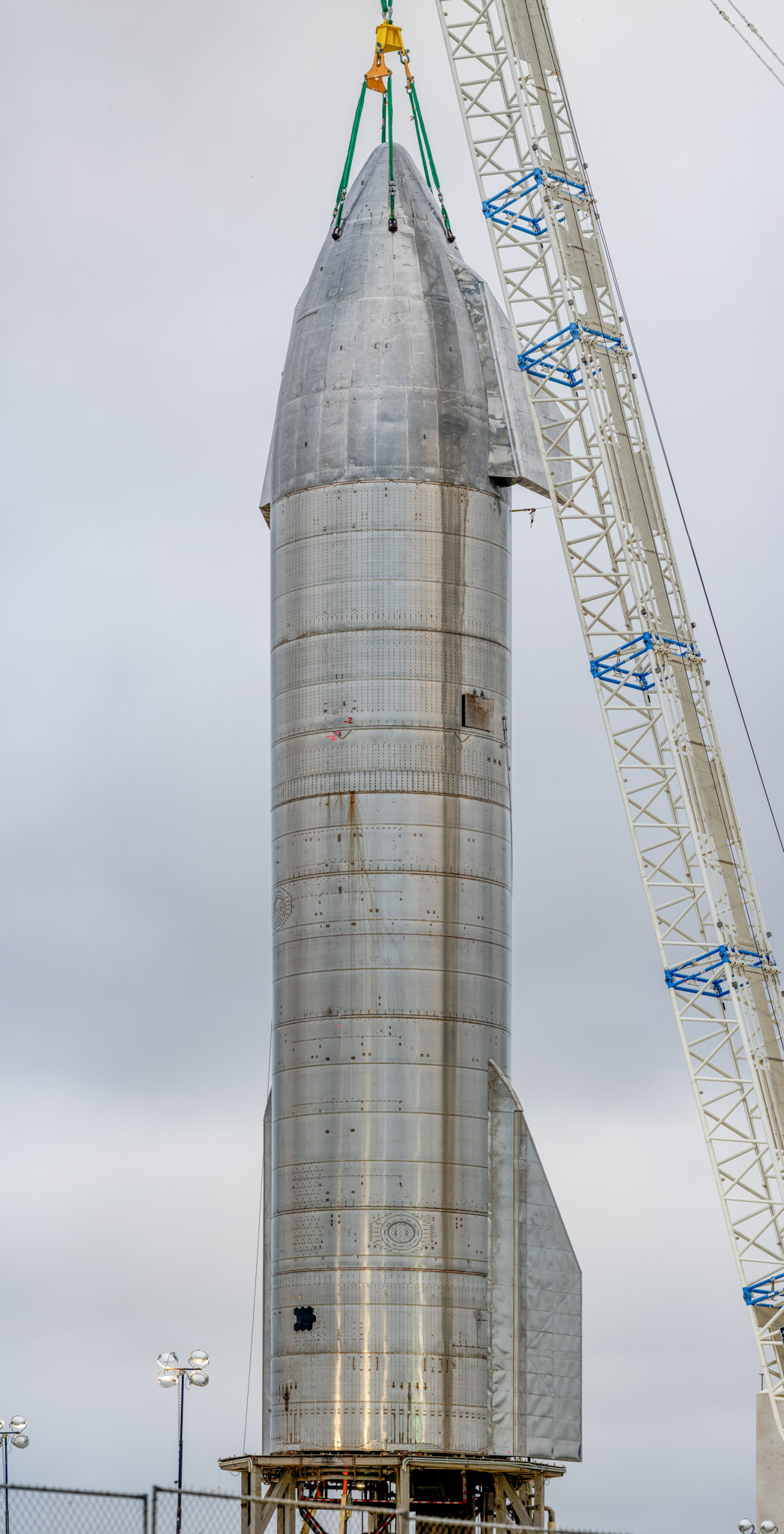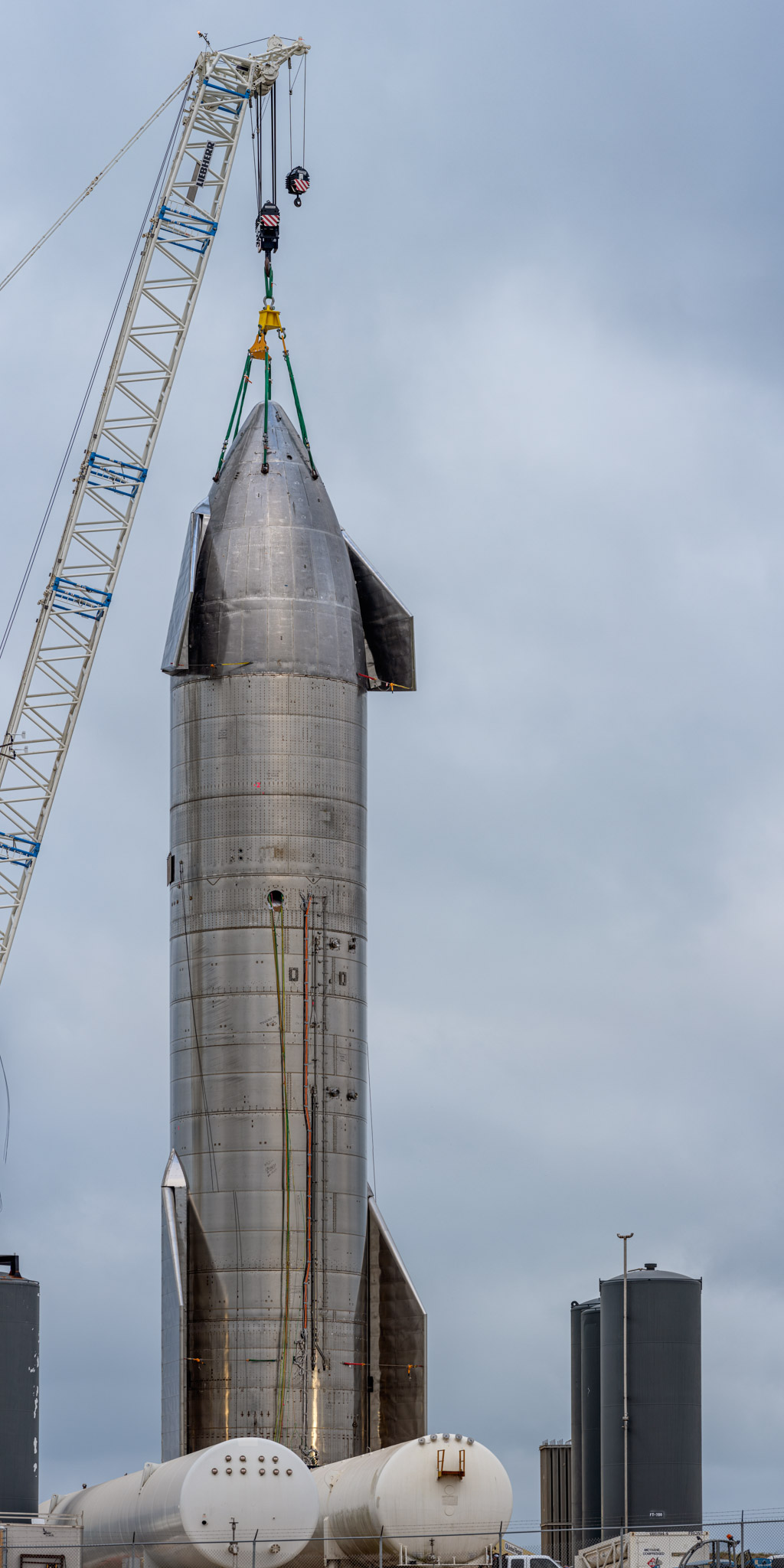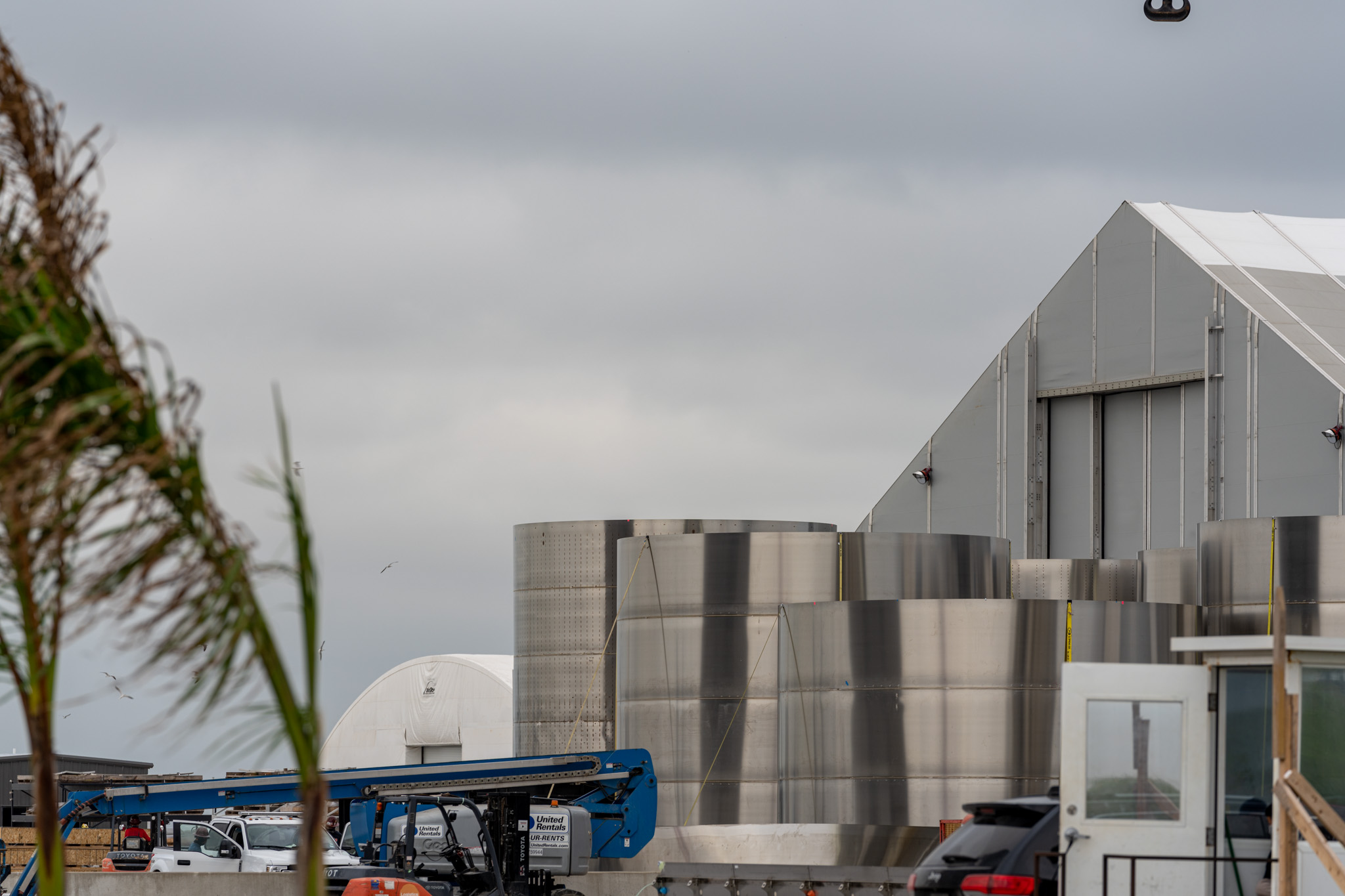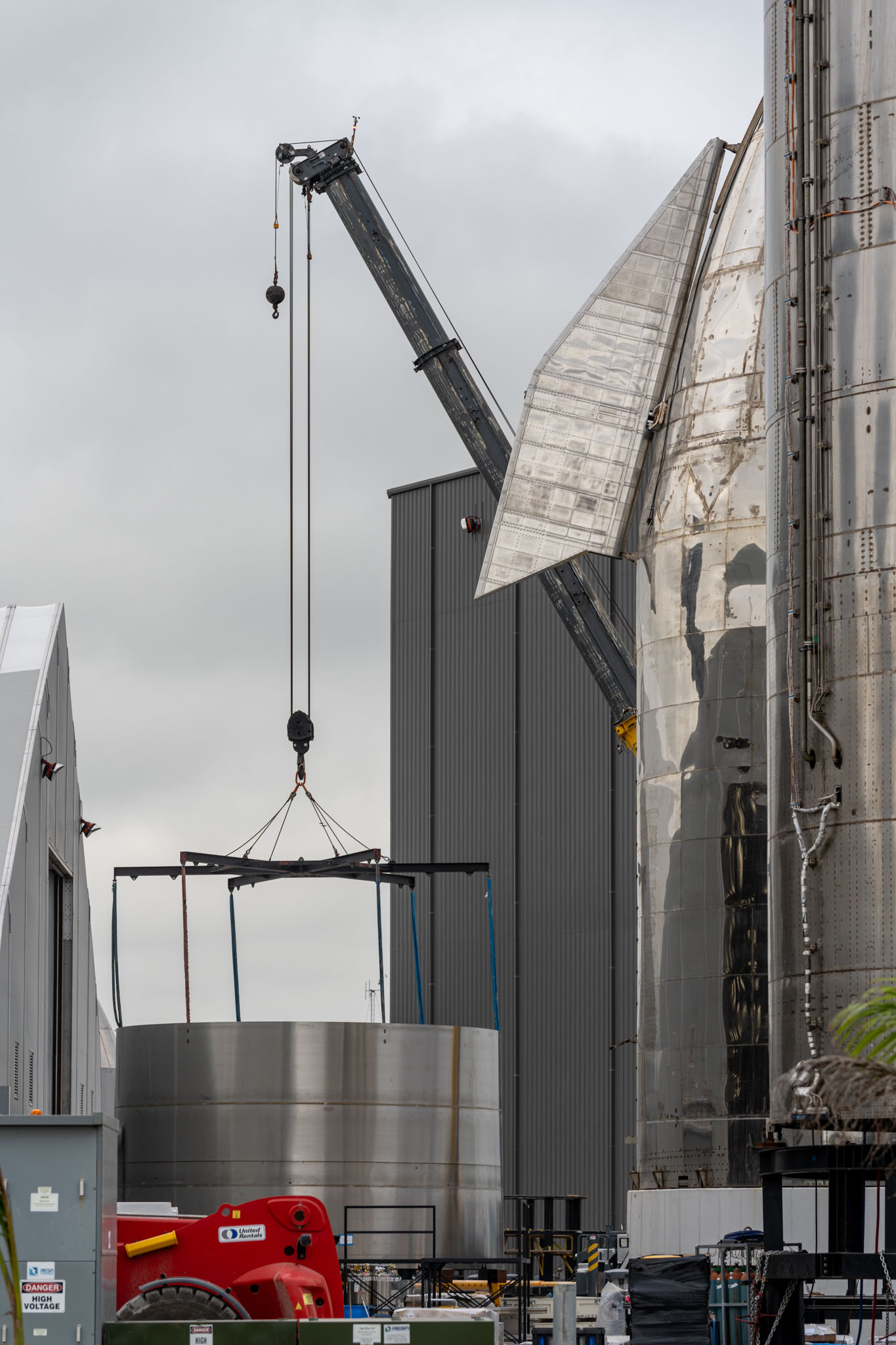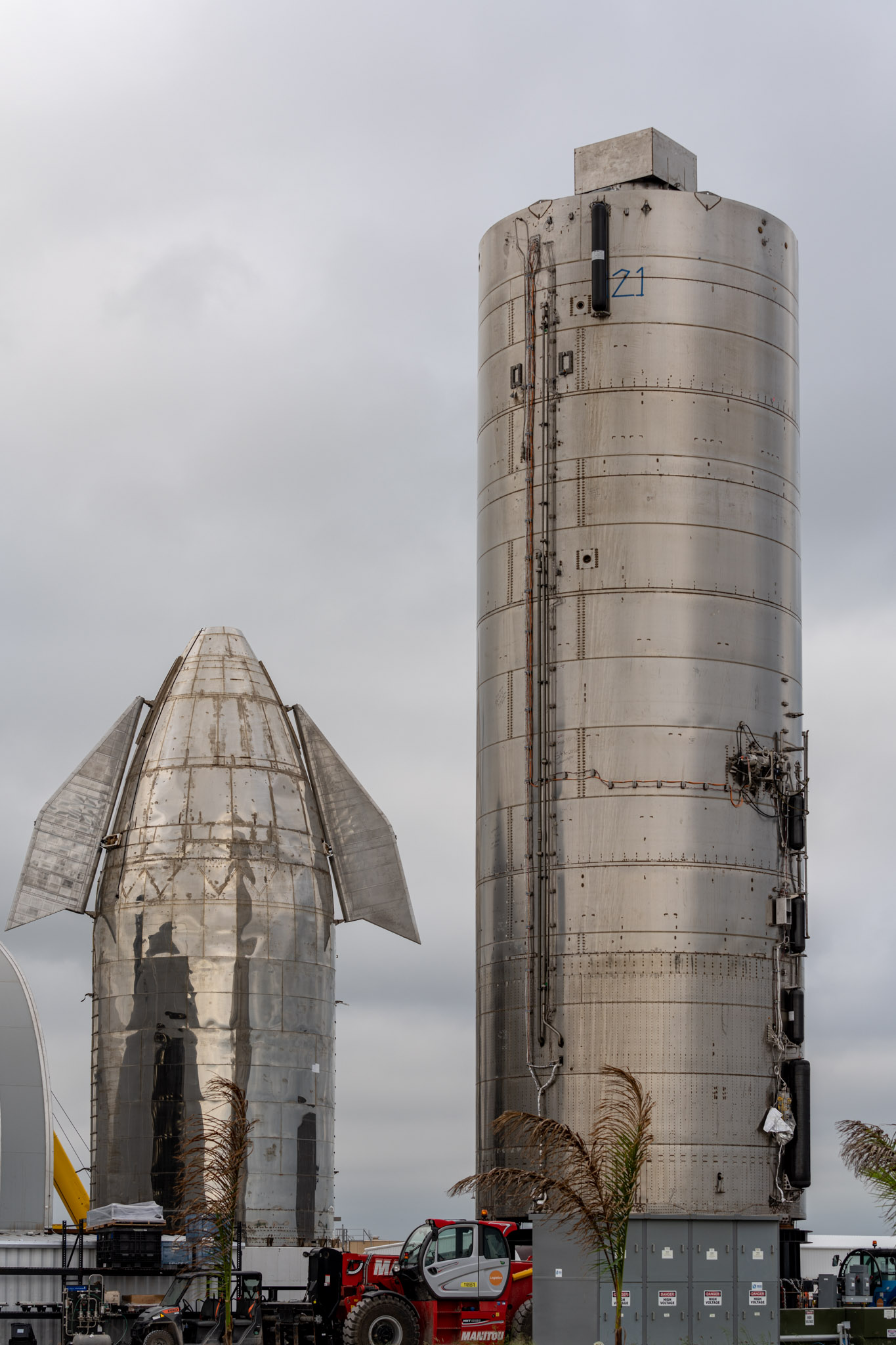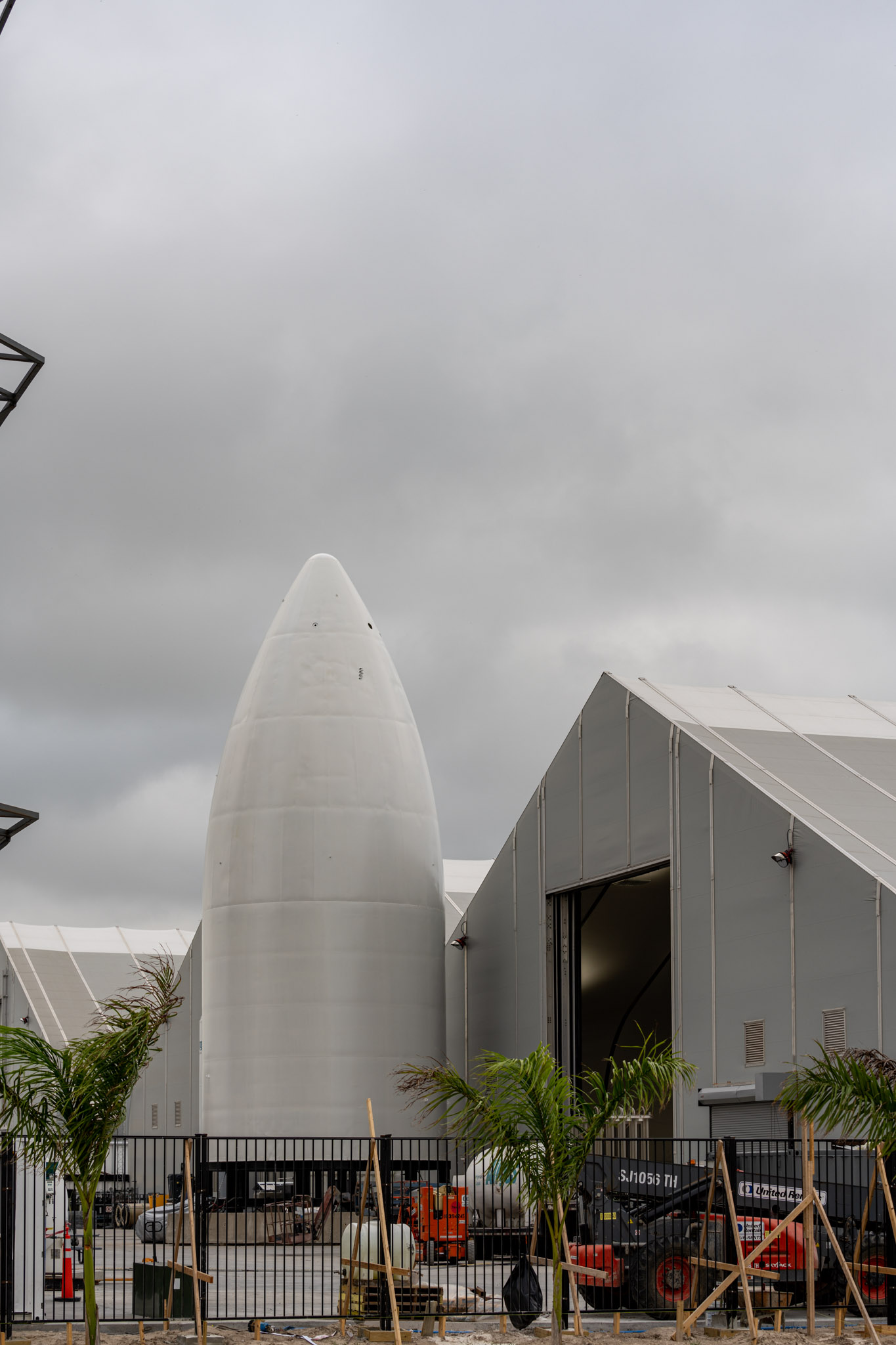It was way further south than I had ever been before in Texas. As my Tesla drove southward I noticed US border inspection checkpoints on the northbound side of the road. I kept traveling south, eventually reaching the small border town of Brownsville, Texas. I was looking for a specific road, State Highway 4, to be exact. Locally it’s known as Boca Chica Boulevard, but it just might be known as something else in the near future: The Road That Took Us To Mars.
I turned east on Boca Chica Boulevard, heading through farm fields and the humid Texas fall morning. To my right, within eyesight, the Rio Grande River, the border between Texas and Mexico. I drove east, towards the Gulf of Mexico, when the trees and shrubs gave way to what looked like massive towers of metal and enormous tents, a construction site unlike anything I had ever seen.
It’s called Starship, and it’s SpaceX’s new interplanetary spacecraft.
What is Starship?
SpaceX has made an impressive name for itself by being the first commercial launch provider to reuse its launch vehicles. The community and the “hype train” they’ve built around themselves is equally impressive. Between my NASA Social trip and visiting Florida to watch SpaceX launch NASA astronauts to the International Space Station, I’ve been converted into a space junkie, compared to my passive interest as recently as February of this year. Their livestreams of rocket launches regularly reach hundreds of thousands of viewers and their precision landings of rocket boosters have almost become routine at this point.
SpaceX’s primary launch vehicle is the Falcon 9 rocket, which I got to see up close just before it launched into space in March of this year.
The Falcon 9 rocket is a great launch vehicle into low-earth orbit and for trips out to the International Space Station.
But Elon Musk and SpaceX want to go further than the ISS. Their targets are set on the moon and, someday hopefully soon, Mars. With the help of NASA funding but largely self-funded, SpaceX is building their next-generation spacecraft. It’s bigger. It’s better. It’s an interplanetary spacecraft called Starship.
Early Saturday morning I drove just a bit further down Boca Chica Boulevard and saw it sitting conspicuously next to the road.
What you’re seeing is known as SN8 (serial number 8) in its final stages of assembly. It stands roughly 50m (160 feet) tall with a diameter of 9m (30 feet). Starship will launch to space atop SpaceX’s next-generation first stage, the Super Heavy, which itself will be 72m tall! I think the combined 122m launch vehicle will be a truly impressive sight to behold, heck I was blown away seeing just Starship!
Starship will have tremendous capabilities beyond those of Falcon 9. It will be able to take larger loads further into space, enabling further exploration, even fulfilling the longtime dream of Elon Musk by enabling the colonization of Mars. It will literally be the ultimate travel vehicle.
My morning with Starship
I drove around to the other side as the sun began to rise to an unfortunately cloudy day. To be clear, I didn’t have any special access, they’re building it along a public road, as long as people stayed on the other side of the road from the site they could take whatever pictures they liked.
The crane was holding the nosecone in place since it had recently been installed. As I chatted with another SpaceX enthusiast recording a timelapse, we watched truck after truck carrying dirt into the construction site. SpaceX isn’t just building spacecraft here, they’re building their own launch site! Boca Chica, Texas, is a bit more south, and therefore closer to the equator, than Cape Canaveral, Florida, so that means rockets will get a bit of a speed boost from the rotation of the earth (the closer you are to the equator the more dramatic the speed boost, because math). The site has grown and expanded at an incredible pace, documented by local space enthusiasts like RGVAerials on Twitter and there were probably 10 trucks that came through the site as I took photos at the launch site.
These pillars are rumored to be part of the launchpad being built. It certainly looks “launchy” to my untrained eyes.
Now, I’m not exactly an Elon Musk fanboy or anything like that [editor’s note: give me a break he’s totally an Elon fanboy] I decided to get a little family portrait of my Tesla in front of the site.
The smaller cylinder on the right was an early test vehicle called Starhopper, which tested some of the technology which will be used for Super Heavy and Starship. They launched it and successfully landed it in August 2019…and just left it there.
They’ve since added cameras atop Starhopper to monitor progress at the construction site but it looks to be a permanent fixture, celebrating the early success of this new project. While the video makes Starhopper look quite small without context, I can assure you in person it’s much larger than you’d expect. (Construction workers faces removed to protect their privacy and unintentionally make them look headless)
The sun continued to rise and I took two massive vertical panoramas, each over 100 megapixels with incredible detail. I’ll post samples of the images here and will link to the full-dimension pictures (they’re compressed down to about 3MB apiece, as a warning).
Link to full-dimension picture
Link to full-dimension picture
But SpaceX isn’t just building one Starship, their goal is to build hundreds
About a mile west of the launch site is the main construction site for Starship and Super Heavy. As morning yielded to daytime, I gave up on the clouds breaking for better pictures and went over to the construction site for some more pictures. Again, as long as I stayed on the other side of the road from the site, no one seemed to mind that I was there taking photos. I saw the enormous bay towers being erected to provide shelter for future Super Heavy and Starship vehicles as they’re assembled. Nice SpaceX branding on the boom lift too!
Elsewhere on the site I saw quite a few stainless steel cylinders beginning to be stacked. These will become future Starships and Super Heavy boosters.
Elsewhere I saw some of the previous test vehicles for what would become SN8. These towers were used to pressure test the welds which connected each ring of stainless steel (sometimes with explosive results) and they even flew a “hop” with Serial Number 6, with a heavy Mass Simulator block on top to simulate the weight of the nosecone that’s now on SN8.
Finally I saw what will be an enormous fairing assembly. Fairings are large panels which protect payloads from the friction and stress of launching from earth into space. The fairing I saw was painted white and apparently had the famous NASA “worm” logo painted on it, although I couldn’t see it from my viewpoint.
My time at Boca Chica drew to a close and I saw one of the familiar Adopt A Highway blue signs that are seen all across Texas, commitments from companies or groups to look after 2-mile stretches of public roads in Texas. I think what SpaceX is doing at Boca Chica qualifies as caring for the road 🙂
Interested in hearing more about all of this?
I’ll be covering it more and more, since I think it’s absolutely fascinating, but there are some great content creators out there who cover things way more in-depth than I do. NASASpaceflight is a great news website that covers space news around the world, not just SpaceX, and my favorite Space Youtuber is EverydayAstronaut, who produces some absolutely wonderful easy-to-understand videos that go into detail about all of these projects.
In this crazy world that we’re in right now many have joked about wanted to up and leave, it’s been really fun seeing firsthand how SpaceX is planning on doing just that, hope you enjoyed it!
Which picture was your favorite? Tell me in the comments below!


